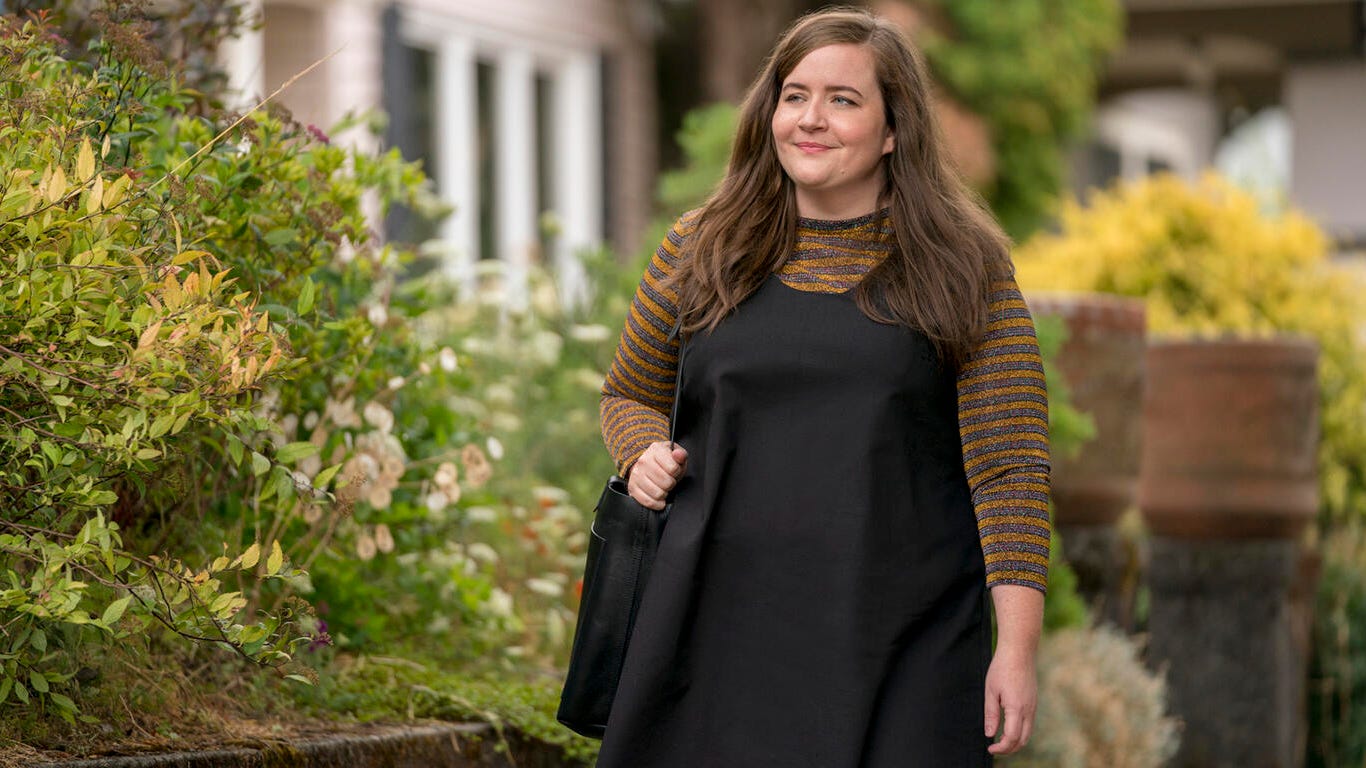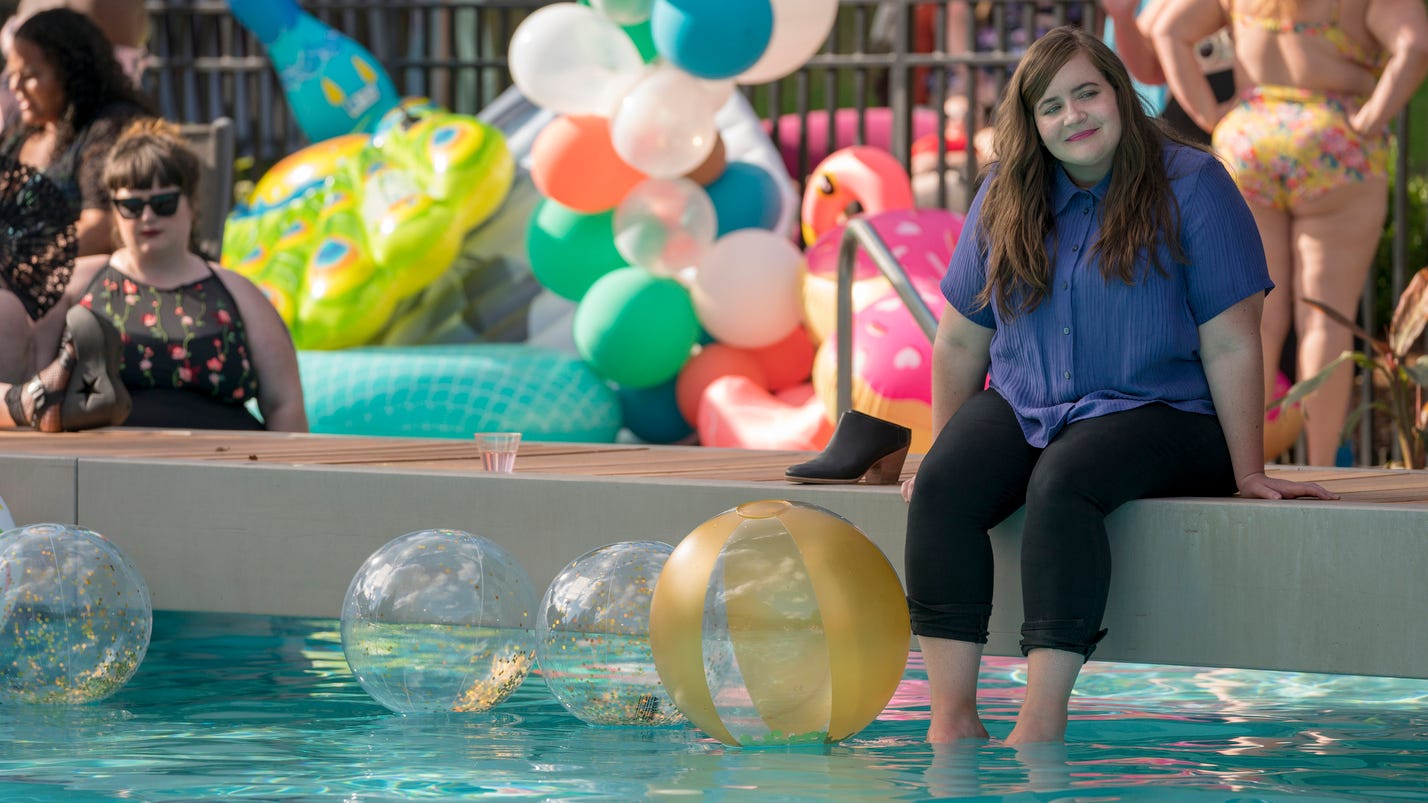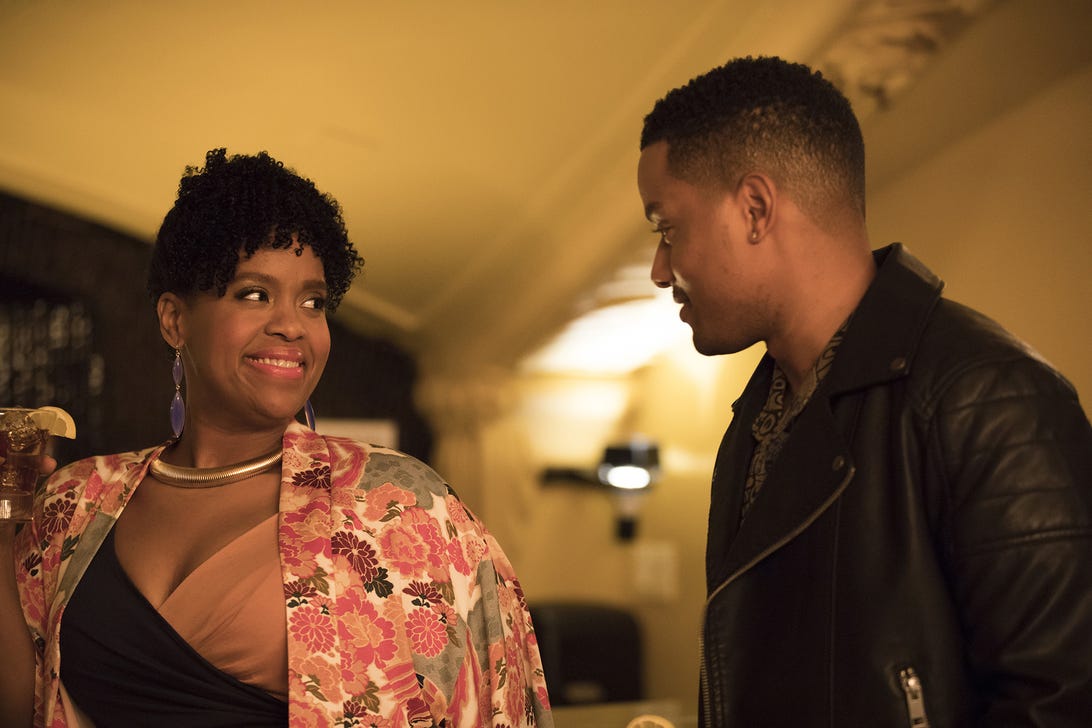
TV Still Struggles with Body-Positive Sex, But 'Shrill' Is a Big Step Forward
The Hulu comedy and its rare predecessors are taking the necessary steps to depict women as actual people, regardless of their size

There is a moment in the opening scene of the very first episode of the new Hulu series Shrill, when Annie (SNL's Aidy Bryant) looks at herself in the mirror while getting ready for work and decides that the shirt she's wearing is a little uncomfortable. And so she does what many of us do: She squats down and pulls the shirt over her knees to stretch it out. It's such a simple, incredibly relatable moment, and yet it's also a surprising one because we've never really seen it happen on television before. Despite the fact that TV has long been ahead of the curve in terms of diversity, it's only been in recent years that we've begun to see more representation of people in larger bodies -- and not just more representation, but realistic representation. What makes Shrill so special is that Annie isn't trying to change her body; she's just an average person coping with the usual daily struggles of work, friendships, relationships, and sex. She just happens to be doing so in a body bigger than those typically depicted in film and on TV.
Shrill wouldn't exist withoutGirls, a fact that becomes immediately clear in the first few episodes of the series based on journalist Lindy West's memoir. Bryant, playing a fictional version of West, has several experiences similar to those faced by Hannah Horvath, the semi-autobiographical character played by Lena Dunham on the HBO series. Annie deals with an immature sex partner who doesn't respect her enough to introduce her to his roommates -- let alone commit to an actual relationship, which makes it all the more painfully real when Annie has to get an abortion because the Plan B contraceptive she took didn't work. Both women are young, aspiring writers with eccentric suburban parents. Both women have sex in the pilot episodes of their respective series, which don't shy away from showing their bodies -- bodies that would not have been depicted in sexual situations on television a mere decade ago. Neither of these women are interested in dieting or losing weight; their lives have so much more to offer than the constant struggle to change their appearance, so that their existence might be more visually pleasing. Unlike most unconventionally-sized women on television, their value is not defined by the number on a scale, or whether or not a random male viewer finds them physically attractive. Nor should it be -- not in fiction, and certainly not in real life.

Aidy Bryant, Shrill
Allyson Riggs/HuluTV is still going through growing pains when it comes to the inclusion of fat people, and fat women in particular. Even the beloved network drama This Is Us, often praised for its casting of Chrissy Metz, continues to make her size an ongoing plot point. It's as if a fat person cannot exist -- in public or on television -- unless they are actively trying to change their appearance. The life of Metz's character, Kate, has been centered around a desire or need to lose weight since This Is Us began and includes plot developments such as dieting and choosing to have gastric bypass surgery, an incredibly dangerous procedure that Kate ultimately opted not to undergo. But Metz has said she was originally pitched on the notion Kate would lose weight over the course of the series, making her size -- and her desire to change it -- an integral part of her character. While This Is Us tries to present an empathetic portrait of what it's like to live in a larger body, it also reinforces a harmful message to viewers regardless of their size: Your body is not good enough. Even worse, if their body doesn't conform to the thin ideal perpetuated by the media and they aren't actively trying to lose weight, then their existence is meaningless. But if a fat character's entire story revolves around losing weight, and they succeed, then what do they have left?
Let's Talk About TV's Evolving, Complicated Relationship With Sex
On the classic sitcom Friends, Monica's (Courteney Cox) larger size in high school is a recurring source of humor, as is the notion that she'll always be a fat girl trapped in a thin woman's body. To even briefly consider the implications of that idea is heartbreaking, but it also gets to the root of how most people struggle with body acceptance: No matter how much weight she loses, she'll still be Monica. Changing her appearance won't heal her relationship with herself, though, as viewers are repeatedly made aware, it did make it easier for her to date. Up until somewhat recently, it was rare to see a fat woman on television, much less one who wasn't trying to lose weight. As television has moved to embrace bodily diversity in shows like Orange Is the New Black, GLOW, andInsecure, some series -- and stars -- have continued to grapple with depicting fat people in sexual relationships. In the Season 2 episode of Girls "One Man's Trash," Hannah has a day-long tryst with a handsome, recently divorced doctor played by Patrick Wilson. On social media, the general response was negative, with many criticizing the series for being unrealistic; there was no way someone who looks like Patrick Wilson would hook up with someone who looks like Lena Dunham. The backlash was so toxic that Wilson's own wife felt compelled to step in on Twitter, where she responded that her husband had no problems with her being "size 10, muffin top & all."
Empire was met with similar backlash following a Season 2 episode in which Becky (Gabourey Sidibe) shares a steamy sex scene with a hot recording artist on a rooftop. The series' depiction of Becky's sex life felt normal and real, but the reactions to it on social media were extremely negative, suggesting that it was laughable or absurd for a rapper with a six pack to hook up with someone of Sidibe's size. Meanwhile, Orange Is the New Black, which features an ensemble that is diverse in shape, color, and sexuality, has always been indifferent to its characters' sizes. Jenji Kohan's long-running Netflix dramedy has seemingly avoided backlash for depicting fat women engaged in sexual activities, perhaps because it attracts a target audience that is largely female. Another acclaimed Netflix series, GLOW, has also made it a priority to showcase different body sizes and shapes. Carmen (Britney Young), Tamme (Kia Stevens), and Reggie (Marianna Palka) are just a few examples of how the series depicts a spectrum of sizes. On HBO's Insecure, Natasha Rothwell steals every scene as Kelli, one of Issa Rae's best friends. Her ego and promiscuity are often a point of humor, but not because of her size; she's just that one friend who's a little bit extra.

Natasha Rothwell and Ron G., Insecure
Justina Mintz/HBOThere's a reason why so many of these examples are women: Although men also struggle with body acceptance, the bulk of diet culture and advertising -- and the resultant fat-shaming -- is targeted at women, whose insecurities are exploited far more often. Men are allowed to look however they want and be intimate with whomever they want -- a long-held double-standard that has been reinforced by shows like The King of Queens, The Sopranos, Seinfeld, and even animated classics like The Flintstones and The Simpsons. Diet culture and the media have collaborated to present an unrealistic physical ideal that's been validated by television and film, perpetuating the stigma around size as well as misogynistic double-standards regarding appearance. It's no wonder that viewers have an easier time accepting that Kevin James can land a wife like Leah Remini while finding it impossible to believe that a man like Patrick Wilson would ever give Lena Dunham the time of day -- let alone all day in his swanky New York brownstone.
Starz's Vida Is Plenty Sexy -- But Every Graphic Moment Counts
Shrill may owe its existence to Girls (and both owe a huge debt to Roseanne, which rarely ever made a fuss about the size of its leads), but it's also a logical evolutionary step in terms of diversity and representation, from Annie's queer black roommate, played by Lolly Adefope, to a salty female co-worker played by comedian Patti Harrison. Although she's a transgender woman in real life, Harrison's gender is never once a point of discussion on Shrill. These are bodies of different colors, shapes, and sizes. They're normal bodies, and not the "normal" that's been touted in magazines and ads and reinforced by film and television since the advent of moving pictures. Shows like Shrill and its rare predecessors are taking the necessary steps to depict women as actual people regardless of their size or gender or skin color: They have career aspirations and insecurities like everyone else; they have romantic problems and sexual encounters, too. They are normalizing bodies and experiences that are common in the real world yet are still treated as "other." Television shows are like funhouse mirrors; they are a reflection of our lives, skewed by comedy or drama or science-fiction. When we don't see ourselves looking back at us, we don't feel as though we belong there -- or here. Would you rather look in a mirror that says your body is wrong? Or one that shows you that there are many others like you and that you're all right -- just the way you are.
This week, TV Guide is exploring television's relationship with sex, puberty, and everything in between. As part of Sex Ed Week, we're examining the story behind a cult classic Lifetime movie, why Game of Thrones' best relationships don't involve sex,how intimacy coordinators are changing the industry, and more. You can check out all our Sex Ed Week content here.